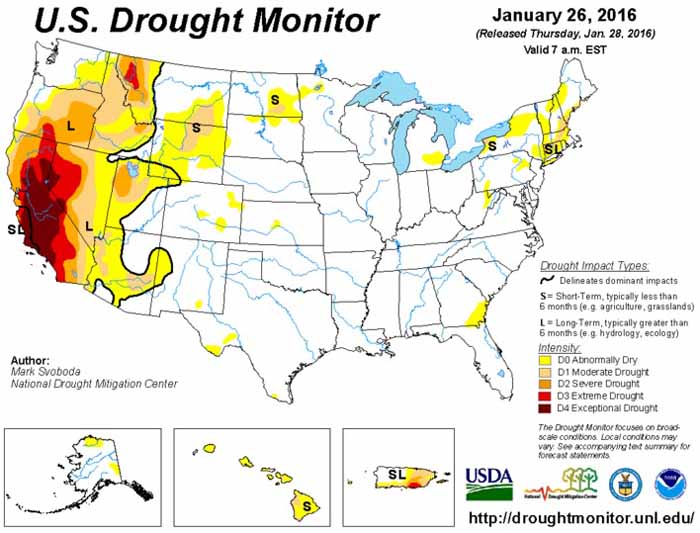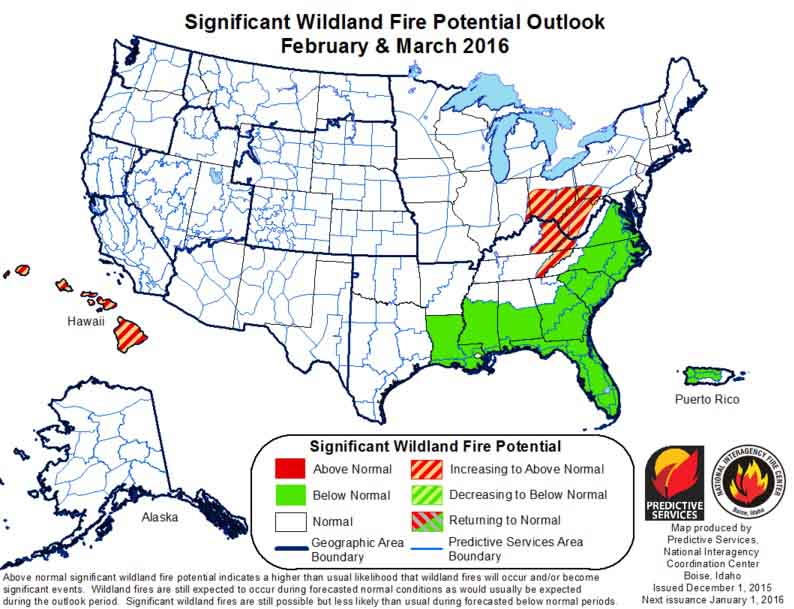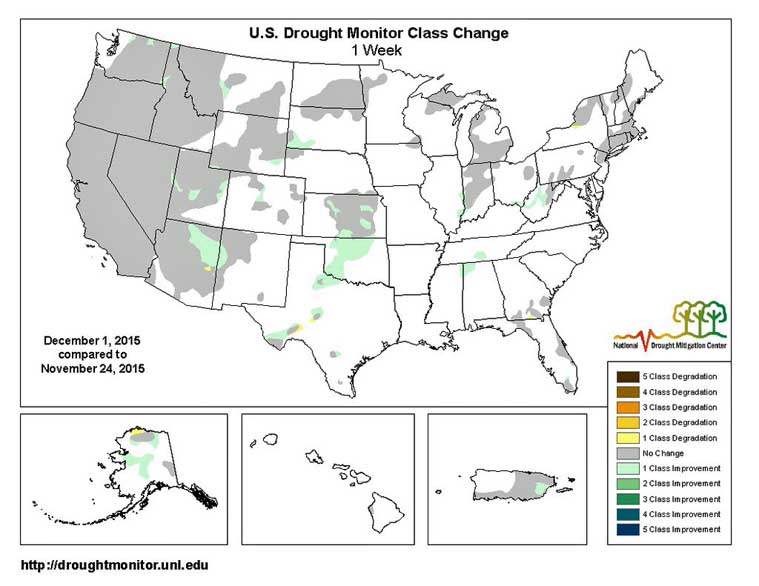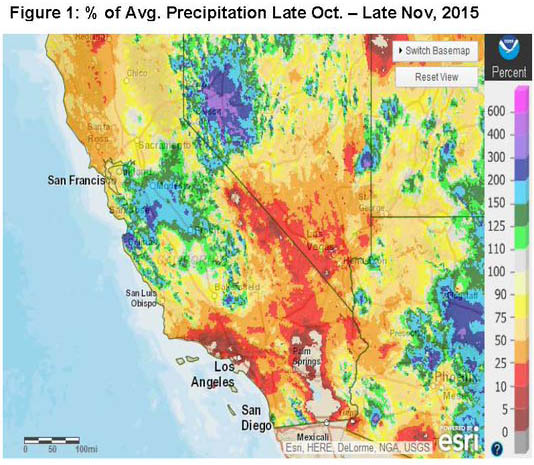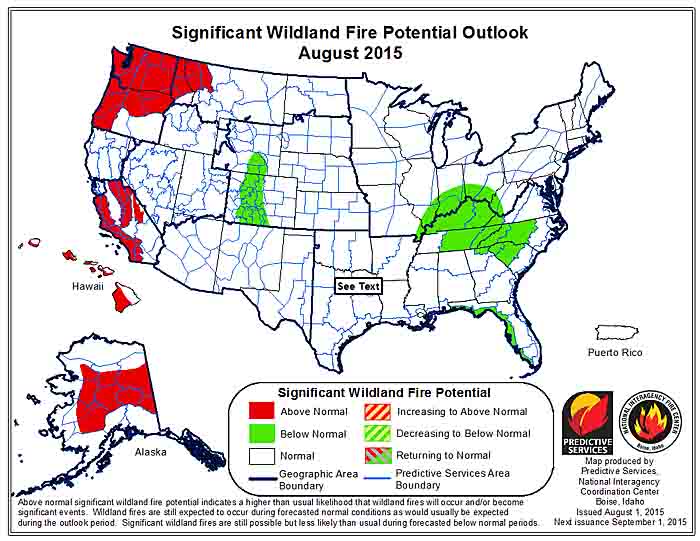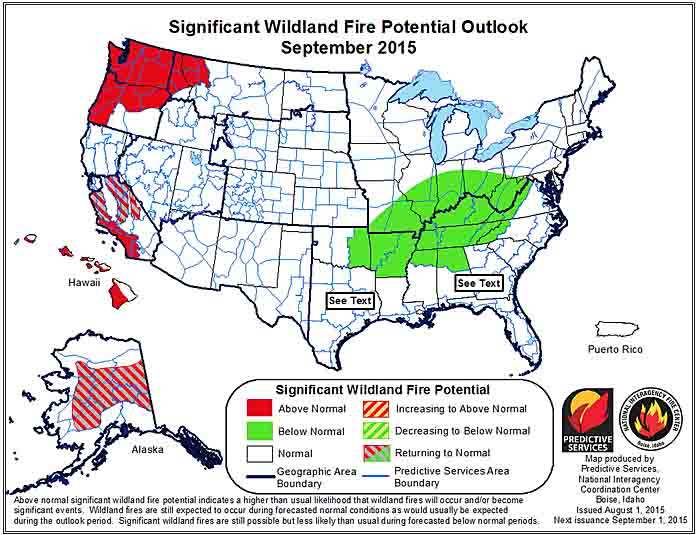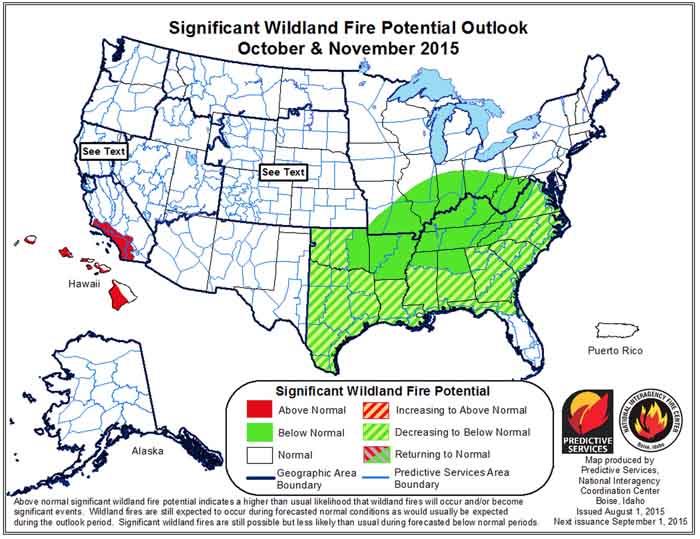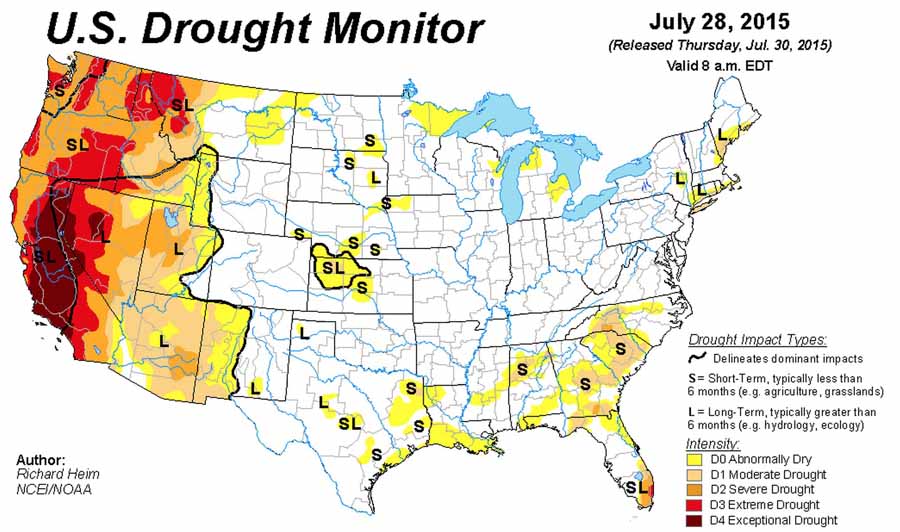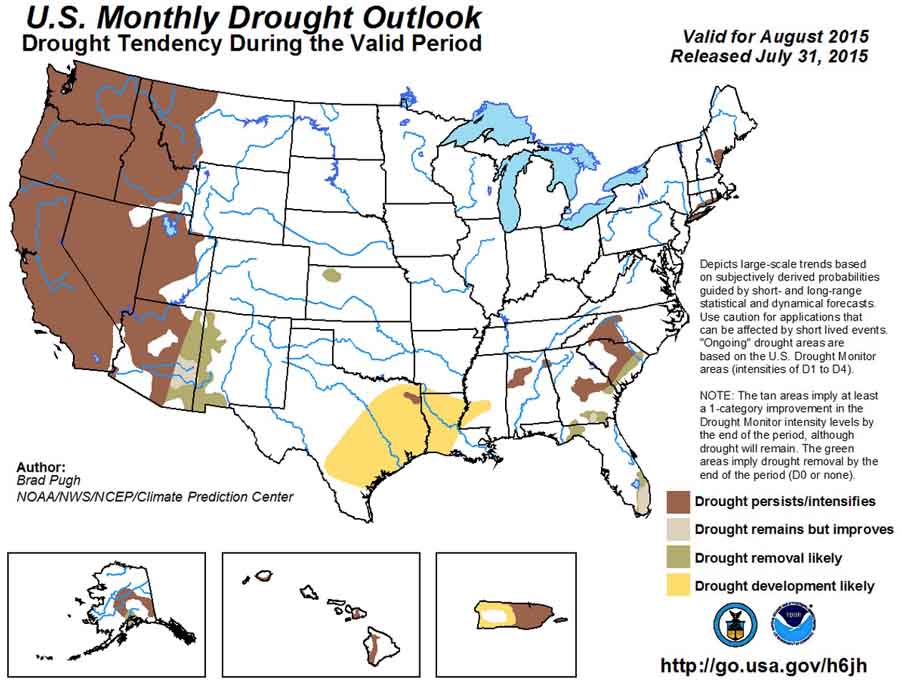On February 1 the Predictive Services section at the National Interagency Fire Center issued their Wildland Fire Potential Outlook for February through May, 2016. The data represents the cumulative forecasts of the ten Geographic Area Predictive Services Units and the National Predictive Services Unit.
If their forecasts are accurate it looks like mild fire potential until April and May when conditions could become more favorable to the spread of fires in the Midwest and south-central Alaska. Hawaii could become busy starting in February or March.
Here are the highlights from their outlook.
February
- Below normal significant fire potential will persist across most of the Southeastern U.S., mid-Atlantic and Puerto Rico as El Nino storm systems continue to bring significant moisture to most of these areas.
- Significant fire potential is normal across the remainder of the U.S., which indicates little significant fire potential.
March
- Below normal significant fire potential will continue across most of the Southeastern U.S., mid-Atlantic and Puerto Rico as El Nino continues to bring significant moisture.
- Above normal fire potential will also develop across the Hawaiian Islands thanks to long term drought.
- Significant fire potential will remain normal across the remainder of the U.S., though potential for pre-greenup fire activity increases through early spring.
April and May
- Above normal significant fire potential will develop across the Great Lakes into the Ohio and Tennessee Valleys where less precipitation has occurred.
- An area of above normal fire potential is also likely to develop across south central Alaska because warm temperatures and rain have limited snowpack.
- Above normal fire potential will continue across the Hawaiian Islands as drought persists. Below normal significant fire potential will continue across most of the Southeastern U.S. and Puerto Rico.
- Significant fire potential continues normal across the remainder of the U.S.
In addition to NIFC’s outlook, here’s bonus #1: the Drought Monitor released January 28, 2016.
Bonuses #2 and #3, 90-day temperature and precipitation outlooks:
=================




